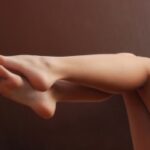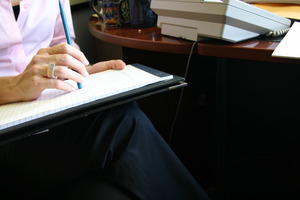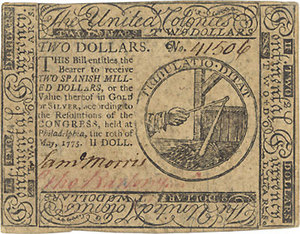The U.S. National Library of Medicine defines varicose veins enlarged, swollen veins appearing on the surface of the skin. These veins turn dark purple or blue and appear twisted where they occur. They primarily show up on back of the calves, usually starting at the bend of the knee, and the back of the legs. When varicose veins appear, this indicates that the valves of the veins have stopped working properly and blood flow is restricted. The veins are actually pools of blood developing in that area.
Varicose Vein Symptoms
The National Heart Lung and Blood Institute lists many of the common symptoms of varicose veins. People begin feeling pain in their legs, ankles and feet. They may notice that their feet and ankles begin swelling. Other varicose vein symptoms include aches and pains in the legs and leg cramps. Another symptom includes itching on the lower leg and ankle. The itching associated with varicose veins may be misdiagnosed as dry skin.
People feel pain and sensation in the legs; however, these are not the only symptoms of varicose veins. People need to pay attention to the way their legs look as well. The skin close to the varicose veins becomes discolored because of blood pooling in the area. In addition to the common symptoms of varicose veins, less common, yet serious signs, manifest themselves in a person.
Thrombophlebitis is a severe symptom of varicose veins. This symptom indicates that inflammation has become so dramatic because blood clots have developed in the area. Another severe symptom of varicose veins is ulceration of the skin covering the veins. The National Cancer Institute states that ulcer formation signifies that the cells near the varicose veins have died. These severe symptoms may occur in conjunction with bleeding. If these symptoms occur, people should see a doctor.
Varicose Vein Treatments
In order to understand how to treat this condition, it is important to know the risk factors for the appearance of varicose veins. Many people are genetically predisposed to getting varicose veins, and obesity increases a person’s chance of developing varicose veins. Other things that increase risks for varicose veins include pregnancy, age, lack of movement, and gender.
Lifestyle changes are the first treatments options for varicose vein treatments. These treatments include not sitting for a long time or crossing legs. Instead, people should walk around and elevate legs above the heart as much as possible. Exercise improves circulation in the legs and helps overweight or obese people lose excess pounds that increase varicose vein risks.
The National Heart Lung and Blood Institute says that other varicose vein treatments that people can do at home include not wearing tight clothes around the waist, upper thigh, and legs. Women should not wear high heels for a long period of time. A lower heel actually tones calf muscles and helps blood flow. Doctors may even recommend compression hosiery to their patients.
Medical varicose vein treatments may be used with lifestyle changes. These procedures remove varicose veins or close them. Sclerotherapy and microsclerotherapy are treatments in which a doctor closes off varicose veins by injecting liquid chemicals. Doctors apply varicose vein treatments using lasers, such as laser surgery and endovenous ablation therapy. Surgical procedures for treating varicose veins include endoscopic vein surgery, ambulatory phlebectomy, and vein stripping and ligation.
Varicose vein symptoms include pain and swelling in the legs in addition to their appearance on the limbs. However, when these symptoms become severe, this could indicate blood clotting that signals internal damage. Doctors, though, have various varicose vein treatment options to care for this painful condition.



